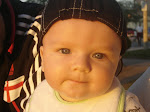Studying hard? If so, here's your reward: 10 sample questions, as well as the short answer preview. I'll repost later today/tonight the answers. I've been sick this weekend, so if I'm late, be patient, please!
Multiple Choice:1. The French and Indian War starts this Revolution… what is the cause of it?
a. Native Americans are frustrated with British settlers taking their land.b. The French and British are at war all over the world, and their rivalry spreads to America.
c. The Americans want independence.
d. The French had a friendly relationship with the Native Americans, while the British did not.
2. After that War, thee British passed a law called the
(blank), forbidding colonists from settling west of the Appalachian Mountains.
a. Stamp Act
b. Proclamation of 1769
c. Sugar Act
d. Proclamation of 17633. After that War, the British were left with this problem:
a. How do they stop the Colonists from getting Independence?
b. They’re broke from years and years of fightingc. How do they stop the French from taking more land?
4. The first tax passed by the British:
a. Stamp Act
b. Sugar and Molasses Actc. Townshend Act
d. Patriot Act
5. The Colonists’ biggest problem with these British taxes was:
a. They didn’t want to pay extra money.
b. Such taxation without representation.c. They were placed on its most popular items to sell.
d. Taxes were just plain unfair.
Matching:31. Song played by the British after they suffered defeat and surrendered to the Americans at Yorktown.
The World Turned Upside Down32. America’s “First Traitor”.
Benedict Arnold33. A spy for the Americans, and former teacher. Executed after being found sneaking British troop movements out of camp in the soles of his shoes.
Nathan Hale34. New style of warfare used by the colonists; sneaky hit and run attacks.
Guerrilla 35. Two different treaties that ended the French and Indian, Revolutionary Wars, but shared the same name!
Treaty of ParisShort Answer: You only have to do ONE of these on the test.
51. Explain what Ben Franklin meant when drawing the above cartoon ("Join or Die"). What was the intended response?
52. Identify which tax/act this pamphlet (from Before the Revolution Notes) protested, and Describe how it does so. Use 2 pieces of evidence to describe it!
53. Recall your “perspective” from our class activity (Slave, Woman, Patriot, Trader, Loyalist, Soldier); Distinguish what your group wanted to get out of the war, citing one specific example from the primary source selection. Remember – you’re the expert!


